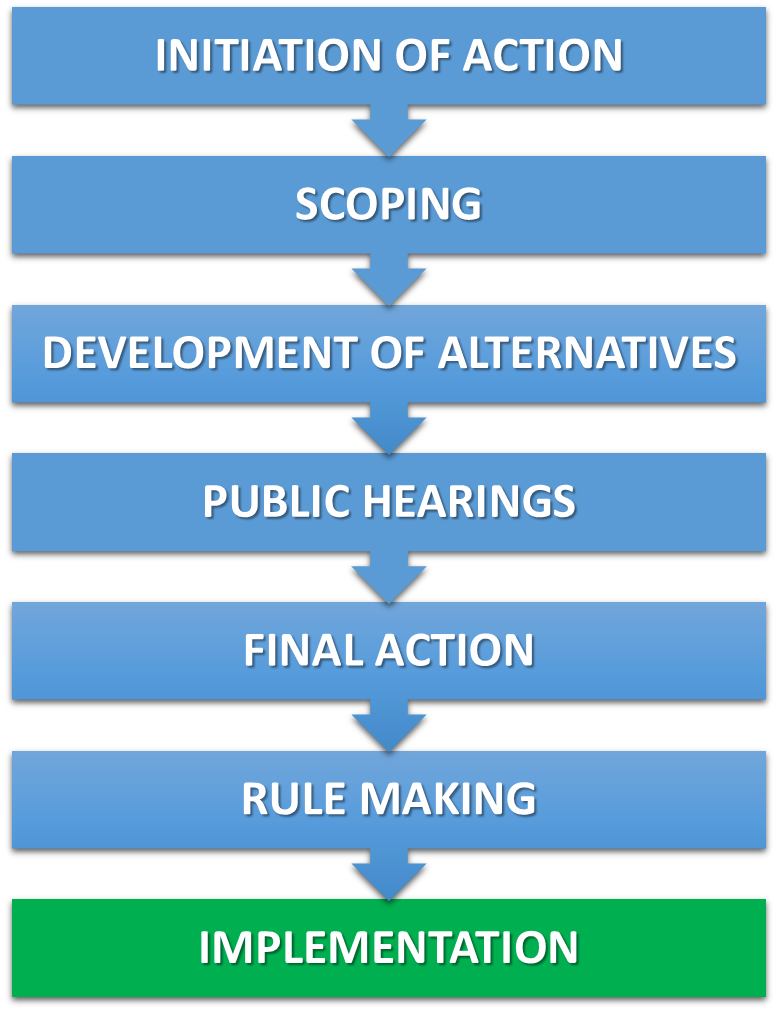Amendment 21 to the Summer Flounder, Scup, and Black Sea Bass Fishery Management Plan
Amendment 21 to the Summer Flounder, Scup, and Black Sea Bass Fishery Management Plan, also known as the Summer Flounder Commercial Issues Amendment, was developed jointly by the Mid-Atlantic Fishery Management Council and the Atlantic States Marine Fisheries Commission. This amendment modified the state allocation system for the commercial summer flounder fishery and updated the FMP objectives for summer flounder. These changes were implemented on January 1, 2021.
Summary of Approved Measures
Commercial Allocation Changes
Amendment 21 changed the state-by-state commercial quota allocations when the coastwide quota exceeds 9.55 million lb. Under the new allocation system, when the coastwide commercial summer flounder quota is 9.55 million lb or less, the quota will be distributed according to the existing (Amendment 4) allocations. When the coastwide quota exceeds 9.55 million lb, the first 9.55 million lb will be distributed based on the existing allocations, and the additional quota above 9.55 million lb will be distributed in equal shares to all states, except Maine, Delaware, and New Hampshire, which will split 1 percent of the additional quota.
This change was intended to increase equity in state allocations when annual coastwide commercial quotas are at or above historical averages, while recognizing the economic reliance coastal communities have on the state allocation percentages currently in place.
FMP Goals and Objectives
Amendment 21 also revised the FMP goals and objectives for summer flounder to provide more meaningful and up to date guidance to managers. The revised goals focus on ensuring biological sustainability of the summer flounder resource, supporting and enhancing development of the effective management measures, and optimizing social and economic benefits from the resource.
Other Measures Considered
The Council and Board considered, but did not recommend, changes to the commercial federal moratorium permit qualification criteria. They also did not recommend adding landings flexibility policies to the list of frameworkable items in the FMP.
Amendment Status
The Council and Board took final action at their March 2019 meeting. A Final Environmental Impact Statement (FEIS) was submitted to the National Marine Fisheries Service in May 2020. On October 19, 2020, NMFS notified the Council and ASMFC that it had approved the amendment. The Final Rule published on 12/14/20, and FMP modifications were implemented on January 1, 2021.
Recent Documents
Approval and Final Rule
NMFS Amendment 21 Approval Letter (10/19/20)
Final Rule (12/14/20)
Proposed Rule
Proposed Rule (8/12/20)
Final Amendment
Allocation Revisions Fact Sheet
Public Hearings
Hearing Announcement (8/10/18)
Full Amendment Documents:
Committee Meeting Summaries
Commercial/Recreational Allocation Model
Final Allocation Model Report, revised April 2017 (Note: this model will be updated following release of revised MRIP time series)
Advisory Panel Documents
FMP Goals and Objectives Workshop (December 2015)
Fisheries Forum Presentation: Project Overview and Perspectives on Goals and Objectives
Staff and Fisheries Forum Presentation: Council and Board Perspectives and FMAT Recommendations
Past Council/Board Meeting Materials
Scoping Documents
Final Scoping Document (9/5/14)
Scoping Guide (9/26/14)
Draft Action Plan (Version 1; 5/30/14)
Federal Register Notices
Amendment Background
Summer flounder are managed cooperatively by the Atlantic States Marine Fisheries Commission in state waters (0-3 miles), and by the Mid-Atlantic Fishery Management Council and NOAA Fisheries in Federal waters (3-200 miles).
A number of issues and concerns relative to summer flounder management have been raised by Council and Commission members, advisors, and other stakeholders. The Council received significant input on summer flounder management during the Council's Visioning and Strategic Planning process, conducted from 2011-2013. During this process, input gathered from surveys, port meetings, and other comment opportunities indicated that there was significant stakeholder interest in re-examining and updating many of the management strategies and measures currently in place for the summer flounder fishery.
In addition, this action was proposed to evaluate the need for management response to changing conditions in the summer flounder fishery. This includes addressing apparent shifts in the distribution and center of biomass for the summer flounder stock (possibly related to the effects of rebuilding and/or climate change), as well as changing social and economic drivers for these fisheries.
The Council conducted fourteen scoping hearings and solicited comments from the public in September and October of 2014. Comments were compiled and presented at the Council’s December 2014 meeting. Based on these comments, the Council and Board identified four general categories of issues to be addressed in the amendment:
Fishery Management Plan (FMP) goals and objectives,
Quota allocation between the commercial and recreational sectors,
Commercial management measures and strategies, and
Recreational management measures and strategies.
These issues were later split into separate actions to expedite addressing commercial issues and FMP goals and objectives revisions while revised time series of recreational data are being developed by NMFS.

